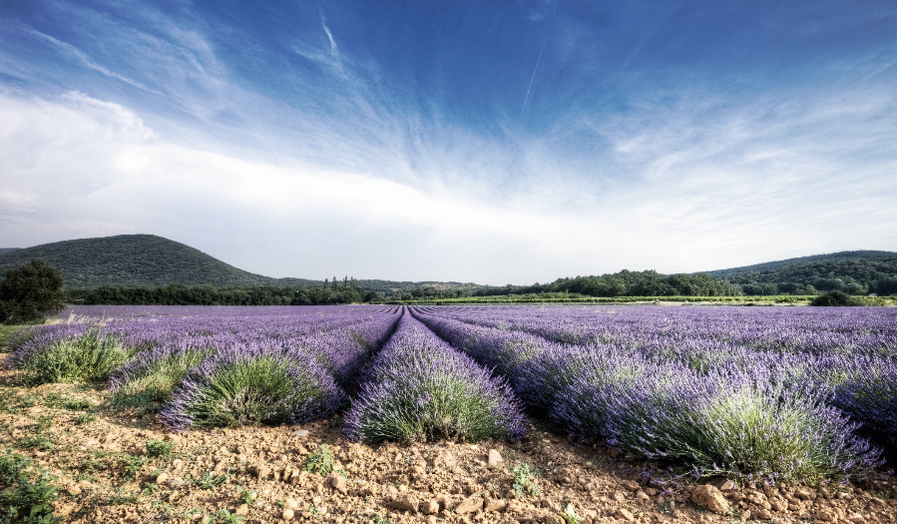
In addition to the standards, there are a number of official and unofficial labels to help identify essential oils, including geographical and fair trade labels.
Here are the most important ones:
Geographical label :
There is only one PDO in the essential oils sector, for fine lavender. According to the INAO: A PDO designates a product in which all stages of production are carried out in accordance with a specific PDO. recognised expertise in the same geographical area, which gives the product its characteristics. It is a European sign that protects the name of the product throughout the European Union.
This is the case with Huile essentielle de lavande de Haute-Provence or Essence of lavender from Haute-Provence, whose geographical area covers 4 départements (Alpes de Haute-Provence, Drôme, Hautes-Alpes and Vaucluse) at altitudes of over 800m (600m for the Diois area).
The designation applies only to lavender (lavandula angustifolia P. Miller) known as fine or population, steam distilled. This excludes all clonal varieties such as maillette, matheronne and diva.
Fair Trade / Sustainable Development Labels :
* Fair for Life
Fair for Life is a certification scheme for fair trade and responsible supply chains. Companies and organisations certified under the Fair for Life programme:
1. Commit to morefairness by orienting their business model towards fair practices based on a fair pricing policy and a respectful dialogue with their suppliers.
2. Respect the human rights and offer decent working conditions to improve the living conditions and well-being of workers and their families.
3. Respect the environment, biodiversity and climate by taking responsibility for their environmental impact and gradually implementing sustainable farming practices that encourage conversion to organic farming.
4. Act for a sustainable local development by collectively identifying the issues and creating development projects tailored to local contexts.
5. Strengthen their commercial partnerships by implementing a progressive approach aimed at improving the structure and sustainability of their supply chains.
6. Allow producers and workers to ensure their representation in a democratic manner and to benefit from a collective bargaining capacity to develop their economic opportunities.
7. Make it possible to Informed purchasing decisions thanks to transparent communication that guarantees consumers the physical traceability of certified ingredients.
Rainforest Alliance
Always on the lookout for quality products, various labels were created in the 80s and are still used by certain laboratories. These include :
* HEBBD and EOBBD :
The HEBBD (Huile Essentielle Botaniquement et Biochimiquement Définie) / EOBBD (Essential Oils Botanically & Biochemically Defined) quality criteria therefore represent a major step forward.
This label means that the essential oils are fully defined both botanically (organ distilled and stage of development of the plant, exact Latin botanical name including variety, chemotype, country of origin and method of cultivation) and chemically (chromatography is carried out for each new batch of essential oil).
* HECT :
Other laboratories use the HECT label, similar to HEBBD, which stands for Huile Essentielle Chémotypée (chemotyped essential oil) and is also a guarantee of the botanical and biochemical quality of essential oils.
However, this label is not checked by official bodies and is therefore only binding on the good faith of its user.
Between reference systems, standards and quality, to make the right choice for your project, talk to our experts who will guide you through the range of possibilities.
Find out more in our article on all the official standards for essential oils.